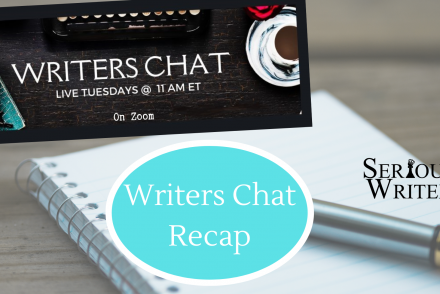Do all of your sentences sound similar, or are you having difficulty transitioning from one scene to the next? A reader needs to be able to easily follow along and will quickly lose interest if this does not happen. Editing can be frustrating, but it is crucial to your success as an author, so after you get your thoughts down on paper (or digitally, nowadays) you need to go back to be sure that there is a good flow to your thoughts. Transition words are an easy way to add variety to your sentences and at the same time make your story sound more interesting. There are three main ways to use transition words, which I will illustrate below.
Ways to Use Transition Words or Phrases:
1. At the beginning of a sentence
Many times, transition words or phrases are used at the beginning of a sentence and are followed by a comma. This informs the reader of what they should do with the upcoming information, such as signaling a change in topic or that an example will follow.
Below is an example of a paragraph that does not use transition words. Note that it sounds choppy, and the relationship of the information is not very clear.
He made it back home with dinner. He and his wife shared a quick but lovely dinner, as his wife always seemed to be famished since discovering she was eating for two. They sat out on the patio and leaned back in their chaise lounges. They gazed up at the full moon and chatted until they were both sufficiently tired enough to go to bed.
If we add some transition words, the paragraph reads more smoothly and the relationship of the information becomes clearer.
Finally, he made it back with dinner. Next, he and his wife shared a quick but lovely dinner, as his wife always seemed to be famished since discovering she was eating for two. Afterward, they sat out on the patio and leaned back in their chaise lounges. Then, they gazed up at the full moon and chatted until they were both sufficiently tired enough to go to bed.
2. At the beginning of a clause
Transition words do not always have to be at the beginning of a sentence. Sometimes, they can be better used in the middle of a sentence when joining two clauses. The transition word could be at the beginning of dependent or independent clauses. Again, this also adds a little bit more variety to your writing.
Here are a couple of examples of independent clauses that seem very short and uninteresting.
The two teenagers wanted to go to the fair. Neither one of them had a car.
This could be dangerous territory. Businesses should err on the side of caution.
When the sentences are joined with transition words, they become much more interesting to read.
The two teenagers wanted to go to the fair, although neither one of them had a car.
This could be dangerous territory; therefore, businesses should err on the side of caution.
Now, here is an example of an independent clause joined to a dependent clause by a transition word acting as a subordinating conjunction.
We are required to wear black or blue pants since we are employed there.
3. At the beginning of a paragraph
One of the best uses of transition words is to insert them at the beginning of a paragraph. Try reading the following two paragraphs. You may observe that there seems to be an abrupt switch to a contrasting opinion in the second paragraph.
The use of social media for recruitment of new teachers provides many advantages for school districts. Open positions can be posted on various platforms of social media. Many districts have formed local consortiums where they can post open positions and a candidate can submit an application to be kept on file for use in any position posted on the site. Districts also have the option of posting available positions on the district Facebook page or the district website.
There are also drawbacks to using social media for recruiting. Not everyone uses social media; therefore, older candidates or those with low socioeconomic status might not be aware of the posting even though they may be a perfect fit for the job. People from other areas of the country may not know which sites to access, as well.
In order to better connect your ideas, try adding transition words or phrases at the beginning of some of your paragraphs. Read the same paragraphs below and pay attention to the differences. With the transition word used in the second paragraph, there is a much better flow to the passage. Notice also that transition words can have different purposes, such as referencing or to contradict.
In regard to the use of social media for recruitment of new teachers, it provides many advantages for school districts. Open positions can be posted on various platforms of social media. Many districts have formed local consortiums where they can post open positions and a candidate can submit an application to be kept on file for use in any position posted on the site. Districts also have the option of posting available positions on the district Facebook page or the district website.
In contrast, there are also drawbacks to using social media for recruiting. Not everyone uses social media; therefore, older candidates or those with low socioeconomic status might not be aware of the posting even though they may be a perfect fit for the job. People from other areas of the country may not know which sites to access, as well.
There are so many transition words and phrases to choose from! This is one of the aspects that makes writing so fun. You can experiment with various options and see which one speaks to you more. While the use of transition words and phrases makes your writing clearer and more cohesive, be sure not to overuse them. Too many can make a story sound repetitive and wordy. Additionally, it may be distracting to the reader so much so that your passage becomes difficult to read or understand.
I hope you enjoyed this introduction to transition words and phrases.
Happy writing!

Heather Malone writes children’s books that focus mainly on Montessori education, special education, and nonfiction. She also dabbles in fiction. Her nonfiction book, Montessori from A to Z, was published in 2023, and her blog on homeschooling students with disabilities using the Montessori method can be viewed at spedmontessorisolutions.com. Her passion is education, which is evidenced by spending over twenty-five years in the field before leaving the classroom to now provide technical assistance to school districts. She lives with her husband and son in Ohio and enjoys traveling to new places in her free time.




No Comments